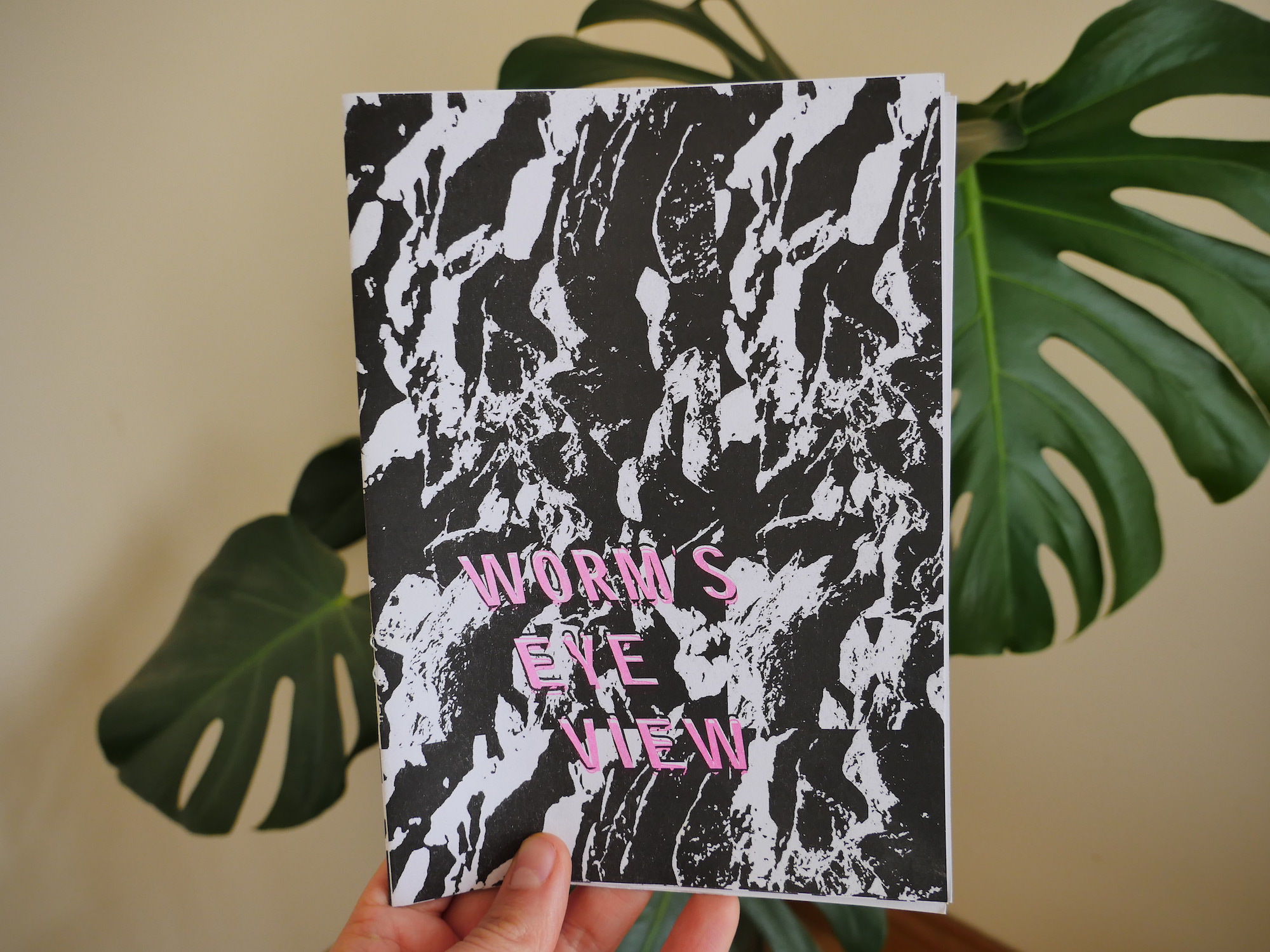Below is a short extract from Worm’s Eye View. Originally riso-printed as a short run publication to coincide with the Scottish Premier of Geomyth (2020), a moving image work, at Embassy Gallery, Edinburgh.
In complete darkness, you carefully press small, precious stones into an earthen wall. Beside smooth glass beads and bits of broken tile lay fifteen waxy pear seeds, strewn about. Their smoothness draws you to slowly rub your body across them in delight. The ground beneath you is covered in fine sand. Your head rests against it after a hard days work and you faintly smell the damp freshness of the loam and thoughts of onion bulbs buried nearby make you peckish.
Far above, a metal whistle blows for a dog’s attention; someone in a room of a house above plays deep melodious tones on the bassoon. You do not hear anything, and are unappreciative of good music. The Hum, however, is constant. That deep-seated transmission from erratic ocean floors and distant continental plates reassures you in the darkness and provides the abstract rhythm to the digging of evermore burrows.
In this assemblage of worm-soil-moisture-root-air-water-creature-microbe-finger-fork-glove-skin-pip-bulb-secretion-heat-cool, mineral-body-matter-intelligence coalesce: the whole nourishes a rich activity from the bottom to the top. The normal distinctions between these things are being dissolved, and so, worm and human, having had proposed conventions, loosen the tie. But what was being loosened? In the quiet momentum of things, I thought to myself this is not a worm.
Worms on the loose: radically free and representation-less. Observing them, we brought what we thought we knew to what we didn’t know. In our blindness, we speculated, observed and anthropomorphised, testing the waters for a voyage. We imagined through other eyes and committed treason. But throughout all this, and unbeknownst to us, the worm exhorted its will. Like a gem that restlessly broods inside the innards of a rock, it called out and we came to it.
Others on the loose: hippopotamus, wallows, mud and oxygen; the elephant, the sand, the arachnid, the grass, the grub, the carbon and the quartz; onion bulbs, rivers, winds, roots, acids and microorganisms. The entire vivid entourage stretches out beyond the old field. The links rush hurriedly from one to the other, in a series of glorious revelations. The picture explodes with invisible golden threads.
The residents of lowly plains and brown field sites; verges and banks; the black hummus underneath the roads; pavements and carriageways of cities and sprawling suburbia; backwater places; the bramble-ruled railway margins; are by and large plebeian creatures – the worm – uncouth and unknown, their lithic action without an epoch. Yet their actions underpin time in perpetuity. Is it really their time, their moment after moment, while they secrete and creep, that is the true and basic reality of earth-life? Their actions bleed into the psyche and culture of humans, though in the human brain, the intimacy of the human and non-human is perpetually recognised and forgotten. But whether we realise it or not we are beholden unto the worm’s eye view. The impossible possibility of looking with it relieves us of our tendency to imagine ourselves as masterful. And we must remember that we will return to them. Our bones will be dragged, our objects dissolved, until finally, we end up lining the tunnels of their tenebrous ground.
The Hum
The Hum is of contested origin and has been attributed to such things as mechanical sources from industry, the Jetstream, the Midshipman fish’s mating call and other sonic fish as well as the movement of erratic ocean floors. Humbugging hear-nothings often dismiss the widespread reports of persistent and invasive low-frequency humming, however, after extensive tests and confirmation by oscillator, the residents of Taos, New Mexico are one step closer to discovering the occulted source of The Hum.
Loosen the tie
Absolute means ‘ab’ (off) + ‘solver’ (to loosen): to loosen off. That which is loosened off is ‘some-thing that is not an object of knowledge… is free from representation’*. Worms do not dissolve completely into the context of human knowledge. Though we may try to approach, we reach the limit: we cannot know. The mystery moves us beyond the restrictiveness of thinking that implies objects are determined, mechanical or inert.

